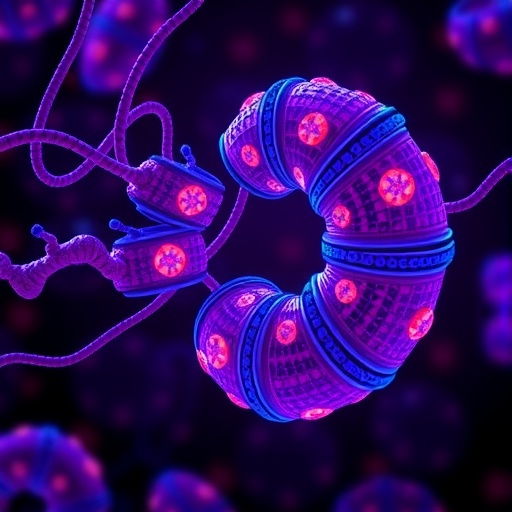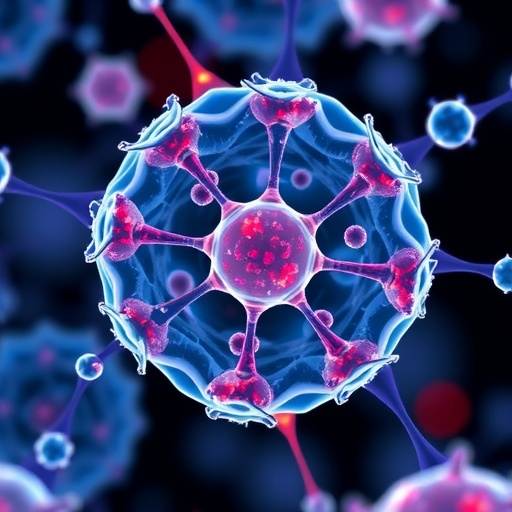In a groundbreaking study that could redefine therapeutic strategies for severe acute pancreatitis (SAP), researchers have shed light on the critical role of Annexin A1 in modulating inflammatory and immune responses within pancreatic and extra-pancreatic tissues. The findings bear significant implications for understanding the pathogenesis of SAP, a condition notorious for its high mortality rate and complex systemic complications. By unveiling the molecular underpinnings of Annexin A1’s function, this work paves the way for innovative interventions aimed at mitigating tissue damage and improving patient outcomes during acute inflammatory episodes.
Severe acute pancreatitis, characterized by sudden and intense inflammation of the pancreas, commonly triggers a cascade of local and systemic immune responses that exacerbate tissue injury and precipitate multi-organ failure. Despite advances in critical care, targeted therapies remain elusive, primarily due to incomplete knowledge of the molecular mechanisms governing inflammation in this context. Annexin A1, a calcium-dependent phospholipid-binding protein, has emerged as a promising endogenous mediator known for its anti-inflammatory properties in various tissues, yet its precise involvement in SAP had remained poorly defined.
The study meticulously delineates how Annexin A1 orchestrates the inflammatory milieu through its interactions with components of the innate immune system. Using sophisticated animal models that replicate severe acute pancreatitis, researchers observed that deficiency in Annexin A1 correlates with heightened inflammatory cell infiltration, amplified cytokine networks, and exacerbated tissue necrosis in both pancreatic and extra-pancreatic organs. Conversely, augmented expression of Annexin A1 corresponded with a marked reduction in inflammatory markers and preservation of tissue integrity, underscoring its protective role.
At the cellular level, Annexin A1 appears to exert its effects by modulating neutrophil activity and macrophage polarization. Neutrophils, which are frontline responders in acute inflammatory events, can induce collateral damage through the release of proteolytic enzymes and reactive oxygen species. Annexin A1 was found to inhibit excessive neutrophil recruitment and activation, thereby curtailing the harmful inflammatory overdrive. Simultaneously, it favored the polarization of macrophages toward a reparative phenotype, promoting resolution of inflammation and tissue healing.
Mechanistically, Annexin A1’s interaction with formyl peptide receptors (FPRs) plays a pivotal role in signaling pathways that temper pro-inflammatory responses. By binding to these G-protein coupled receptors, Annexin A1 triggers intracellular cascades that downregulate nuclear factor kappa-light-chain-enhancer of activated B cells (NF-κB), a master transcription factor driving the expression of multiple pro-inflammatory genes. This inhibitory effect on NF-κB attenuates cytokine storms, a hallmark of severe pancreatitis-associated systemic inflammation. The elucidation of this receptor-mediated mechanism empowers researchers to envision pharmacological mimetics of Annexin A1 as next-generation anti-inflammatory agents.
Importantly, systemic inflammation during SAP is known to induce damage in organs beyond the pancreas, such as the lungs, kidneys, and liver, contributing to the syndrome’s lethality. The researchers demonstrated that enhancing Annexin A1 expression not only mitigated local pancreatic injury but also significantly reduced extra-pancreatic organ damage. This systemic protective effect underscores the protein’s potential as a holistic therapeutic target, capable of modulating the immune landscape both at the primary site of injury and throughout the body’s inflammatory network.
The study’s findings carry substantial translational value. In clinical scenarios, early intervention to boost Annexin A1 activity could arrest the progression of SAP’s destructive immunopathology before irreversible organ failure ensues. Current treatments largely focus on supportive care, leaving an unmet need for disease-modifying therapies. The molecular insights presented offer a foundational framework for developing biologics or small molecules that amplify Annexin A1’s function or mimic its activity, setting a novel paradigm in SAP management.
Further investigations into the temporal dynamics of Annexin A1 expression during pancreatitis revealed that its upregulation coincides with early inflammatory stages, suggesting a natural compensatory mechanism that attempts to restore immunological homeostasis. However, this endogenous response may be insufficient in severe cases, warranting therapeutic augmentation. These data support the concept of Annexin A1 as a biomarker for disease severity and a predictive tool for clinical outcomes, enhancing diagnostic precision.
Advanced imaging techniques and immunohistochemical analyses confirmed that Annexin A1 localizes predominantly to areas with massive inflammatory infiltrates, implicating it actively in modulating cellular crosstalk within inflamed tissues. This spatial association informs the design of targeted drug delivery systems that concentrate therapeutic agents in inflamed pancreatic microenvironments, maximizing efficacy while minimizing off-target effects.
The study also touches upon the interplay between Annexin A1 and the adaptive immune system. While acute pancreatitis is largely driven by innate immune mechanisms, the role of T cells and other adaptive components is increasingly recognized. Annexin A1 was observed to influence T cell responses indirectly by shaping antigen-presenting cell phenotypes, thereby orchestrating a balanced immune repertoire that prevents chronic inflammation and fibrosis—common complications following SAP resolution.
In addition to immune modulation, Annexin A1’s involvement in cellular apoptosis and autophagy pathways was explored. These processes are vital for removing damaged pancreatic acinar cells and limiting inflammatory stimuli. By facilitating controlled cell death and clearance, Annexin A1 contributes to tissue homeostasis and recovery, highlighting its multifaceted role beyond simple inflammation suppression.
The researchers emphasize the necessity of future clinical trials to validate these preclinical findings and to assess the safety and efficacy of Annexin A1-based therapies in human populations. Such trials would need to stratify patients based on severity and incorporate biomarkers reflecting Annexin A1 activity to tailor personalized treatment regimens effectively.
Collectively, this comprehensive investigation redefines our understanding of severe acute pancreatitis by positioning Annexin A1 as a master regulator of inflammation and tissue preservation. These novel insights unlock new therapeutic avenues, offering hope to millions affected by a disease that has long challenged clinicians due to its unpredictable course and limited treatment options. As research progresses, Annexin A1-targeted interventions may revolutionize the clinical management of SAP, ushering in an era of precision medicine in inflammatory pancreatic disorders.
The convergence of molecular biology, immunology, and clinical science in this study exemplifies the power of interdisciplinary approaches to unravel complex disease mechanisms. It also underscores the importance of endogenous regulatory proteins like Annexin A1 in maintaining immune balance and preventing destructive inflammation—principles that could extend to other acute inflammatory diseases beyond pancreatitis. This research not only enhances our conceptual framework but also ignites a new wave of therapeutic innovation poised to save lives.
Subject of Research:
Severe acute pancreatitis and the regulatory role of Annexin A1 in inflammation and immune response.
Article Title:
Correction: Annexin A1 regulates inflammatory-immune response and reduces pancreatic and extra-pancreatic injury during severe acute pancreatitis.
Article References:
Lin, S., Liang, F., Chen, C. et al. Correction: Annexin A1 regulates inflammatory-immune response and reduces pancreatic and extra-pancreatic injury during severe acute pancreatitis. Genes Immun (2025). https://doi.org/10.1038/s41435-025-00348-0
Image Credits:
AI Generated





